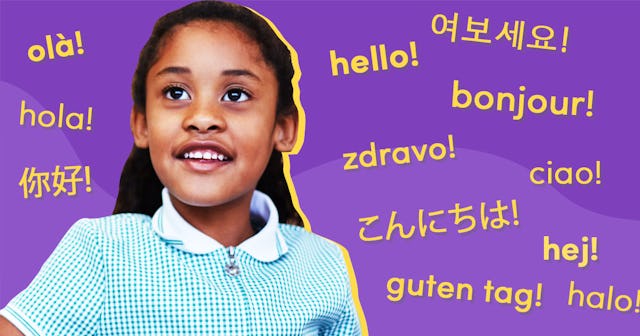Why Kids Should Learn A Second Language ASAP

Speaking more than one language is a skill many people have, but not enough. Many of us have become complacent with being able to speak just one language. In fact, some people are actually proud of the fact. But speaking more than one language is something everyone should be able to do, and the key is starting young. Giving kids the tools to speak another language opens up a whole world for them, literally.
Often, you learn a foreign language when you’re in school. Some kids may learn a new language in elementary school, but many don’t until middle or high school. And while there’s still the capacity for retention, learning at a younger age is far for beneficial.
In fact, the sooner you start, the better. Research shows that kids have a strong mental capacity for learning a second (or third) language at a young age. During the first three years of life, the brain is doing a lot of growing. This study from Harvard University shows that certain functions of the brain are enhanced by learning another language at a younger age. These include creativity, critical thinking skills, and flexibility of the mind. So, you don’t have to wait until they’ve mastered the English language — they can actually be learning English and another language simultaneously with ease.
If you can start your child speaking more than language by the age of three, you’re really in business. Think about how much your kids pick up around that age. They can sing the theme song to Paw Patrol and do all the hand motions to “Baby Shark.” There’s no doubt they can learn to speak Spanish. And that’s a great way to encourage them to do so. Put that screen time to good use and show them videos they may know in English in another language.
We already know that YouTube has all kinds of videos. You can certainly find the theme song to Paw Patrol in another language. Or the theme song to Mickey Mouse Clubhouse. Since they’re already familiar with the song, hearing it another language will make a lot more sense than presenting the new language in an unfamiliar format. A study shows that younger kids can learn new sounds and pronunciations, so use that to their benefit.
We also know that preschoolers excel at play-based learning. This is another great space to introduce a different language. Finding simple songs to sing in another language is a great start. Finding multilingual toys or games that you can play together is another option. Starting with simple things like numbers and colors — those stacking toys from toddlerhood will come in handy yet again. There are apps and videos out there you can use to get started as well.
But if you’ve missed out on the window of starting before the age of five, fear not. Older kids are still perfectly capable of learning and becoming fluent in another language. Though their brains aren’t quite as malleable as they are during the preschool years, or even early elementary, tweens still have a great capacity for learning a second language. Between the ages of 10 and 13, there is still a great potential for near fluency. If they start speaking more than one language by 15, they may sound almost like a native speaker.
A study from 2018 shows that kids as old as 17 or 18 can still pick up a new language, but it’s much harder to become fluent in that language. Not impossible, of course, just harder. Scientists believe the ability to learn begins to slow down around the age of 17. So if you want your child to be fluent in another language, it’s best to start before they turn 10. After 10, they can still learn, but they may not be capable of being fluent.
Pixabay/Pexel
“[In the past] researchers suggested that changes that happen in the brain at around four to five years old might be the culprit in our declining ability to learn language. Others focused on changes that happen at puberty. Our finding that the ability to learn language is actually preserved up until early adulthood throws a wrench in that whole discussion,” Joshua Hartshorne, an assistant professor of psychology at Boston College tells Newsweek. Hartshorne is the author of the study, which was a part of his postdoctoral qualification at MIT.
Discovering that we have the capacity for speaking more than one language until late adolescence is a game changer. There are still questions as to why it becomes harder once adulthood begins, but there are more environmental factors. We’re busier, more self-conscious, and generally apprehensive.
None of the studies have emphasized one language over another, so the choice is yours. Languages like Spanish and French might immediately jump to mind, but some kids are learning Russian or Mandarin as well. There are plenty of free language learning tools, but there are also great options you can pay for.
The biggest thing is encouraging our young kids to begin learning a second language now. They’ll thank you later. Maybe even in an another language.
This article was originally published on